
Inspire your company and stay true to yourself with a tasty and spicy mocktail.

One of the oldest living creatures at the time of her death, Harriet met Darwin on her celebrity path. Page 11




Inspire your company and stay true to yourself with a tasty and spicy mocktail.

One of the oldest living creatures at the time of her death, Harriet met Darwin on her celebrity path. Page 11


By Suzan Filipek
Kimberly Aboltin always knew her home at Château Laurier was special. Now, the Châteauesque building where she resides really is special. It was named a Historic-Cultural Monument recently by the Cultural Heritage Commission.
Aboltin, as a tenant in the building, took on the task of applying for the designation to help preserve the regal property for years to come.
“I just love the building so much and wanted to make sure it was restored to safety and make sure it would never be demolished for whatever reason and keep as a piece of L.A. history,” Aboltin said.
She connected with James Dastoli, known for his acumen in helping to preserve significant historic properties, and dug deep to research the building’s history — dating back to before it was built in 1929. She also spoke at three City Hall meetings.
The property, at 4353 W. Fifth St., at the corner of Wilton Place, was designed by Leland A. Bryant. A permit was issued for construction of a 63-room apartment and automobile store room. It was later acquired by the Ritz management company who sold it and a neighboring cottage to Seymour, LLC, in 2008.
In 2014, Château Laurier received a Landmark Award from the Windsor Square-Hancock Park Historical Society.
French château style
The Châteauesque multifamily residence is based loosely on the architecture of 16th-century French châteaus in the Loire Valley especially in its roofline and turrets.
This and other castle-like buildings “from the 1920s through 1940s were part of the fantasy image created of Los Angeles,” according to a 58-page report by the L.A.
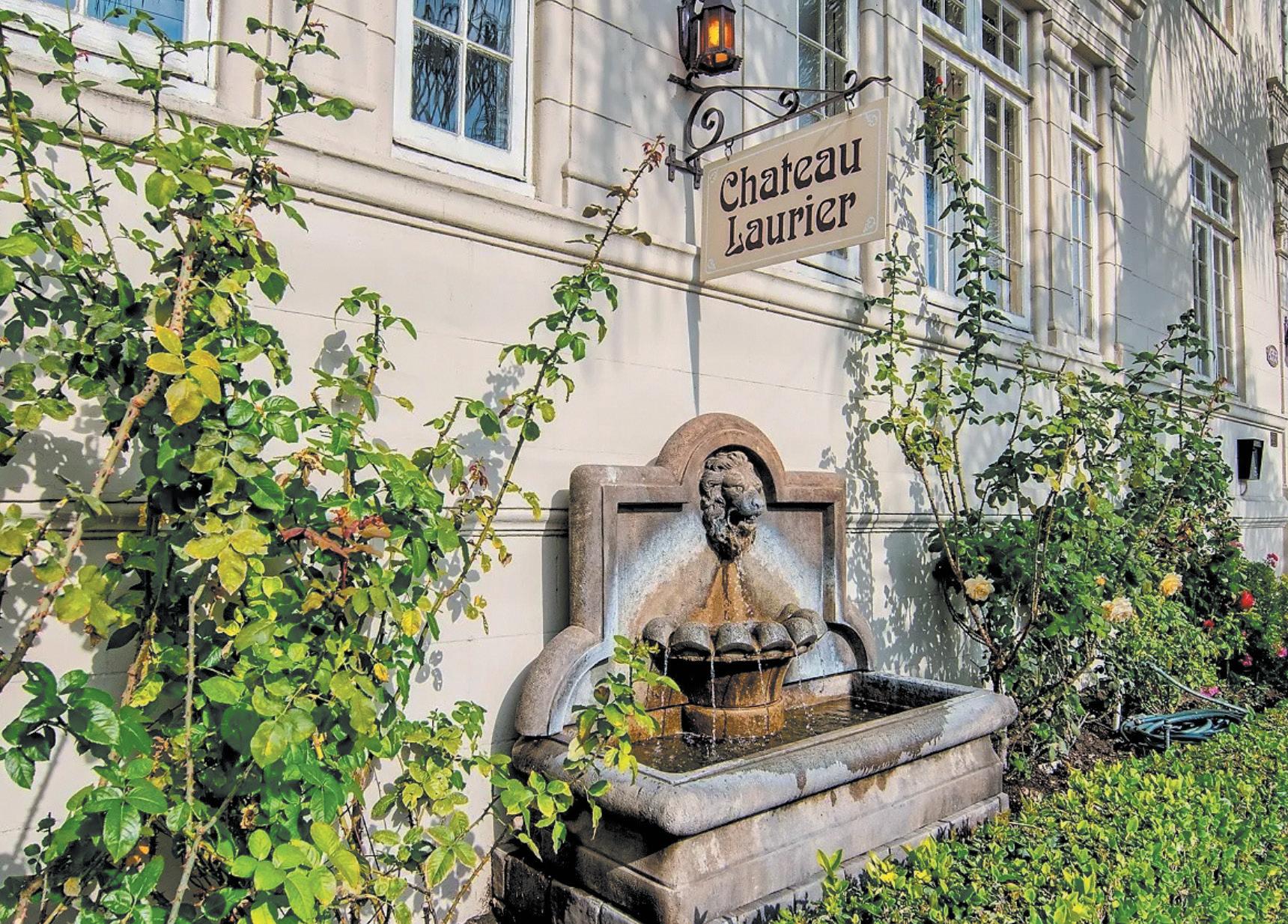
Dept. of City Planning.
Affluent and famous people were thought to live here, which, like living in a castle, made references to aristocrats in 18th-century Versailles, the report said.
Château Laurier was made of concrete shaped to resemble stone, with a steeply pitched hipped roof clad in composite shingles with chimneys.
“It embodies the distinctive characteristics of a style, type, period or method of construction; or represents a notable work of a master designer, builder, or architect whose individual genius influenced his or her age,” according to the nomination summary.
According to a 1928 Los Angeles Times article, it was built for $260,000 with 17 studio and duplex apartments designed as individual homes. Features included private baths, service by electric elevators and 20-foot ceilings, giving a cathedral effect.
Aboltin estimates her fourth-floor apartment’s arched ceilings are closer to 35-feet high.
“I want to do as much as I can to make Los Angeles beautiful. I think it’s so important,” she said.
Dastoli, who calls himself a local volunteer, stepped up when Aboltin reached out.
“Château Laurier was a building that I had seen on [historic] surveys from years back, so it was already on my radar as one that could be landmarked.
“It’s great to see residents organizing in that part of

Greater Wilshire. The single-family neighborhoods have such a strong sense of community, but the largely multifamily area south of Third [Street] and east of Van Ness [Avenue] doesn’t really have any organization,” Dastoli added.
By Helene Seifer
Congress established Women’s History Month in 1987 after the National Women’s History Project (now the National Women’s History Alliance) petitioned them to do so, followed by President Reagan issuing a proclamation to designate March as a time to celebrate American women’s achievements and contributions to our country’s history.
Of course, women’s organizations around the country were already lauding the accomplishments of women, including The Ebell of Los Angeles, which was established by and for women in 1894. “We have long been a space where women come together to be heard, celebrated and uplifted,” states Ebell Executive Director Stacy Brightman. “And this Women’s History Month is shaping up to be something truly special. We’ve got a lineup that’s as diverse and inspiring as the
women we’re honoring.”
Los Angeles women composers are in the spotlight in Live in the Lounge: HERS — Music Ensemble, Tues., March 4, at 7:30 p.m.
Mezzo-soprano Susan Graham and the Copland House Ensemble perform “A Standing Witness,” a cycle of songs recounting changes in society since 1968, on Sat., March 9, at 4 p.m.
Five storytellers from the local group Strong Words share their truths in the Ebell’s Salon Series: Women in the Muse. Tues., March 18, at 7:30 p.m.
Juried Art Show: A Woman’s Place — Visual Voices is Thurs., March 20, at 6 p.m.
The Ebell Institute annual Women’s Symposium, a free daylong series, is Sat., March 29.
For more information about events, to RSVP or to purchase tickets, go to ebellofla. org/calendar.
The
longtime
and


“Skyscraper Reveals New Type of Architecture,” announced the Los Angeles Times Real Estate section in 1929 at the release of plans for a new tower set to become the eastern gateway of A.W. Ross’ Miracle Mile. Almost a century later, it is hard to imagine the majesty of the once heralded E. Clem Wilson Building, at 5225 Wilshire Blvd., at the northeast corner of La Brea Avenue. Its unique design is now obscured and its stature reduced amid the construction of a new subway station at that intersection. A new application for Historic-Cultural Monument (HCM) designation submitted by the Art Deco Society of Los Angeles (ADSLA) aims to remind the public — and, hopefully, the property owners — of this forgotten Art Deco gem’s significance and potential.
The building was the late-career project of Mr. Elihu Clem Wilson, who lived at nearby 108 Fremont Pl. and was a millionaire member of the old guard, having made his fortune in the patenting and manufacture of drilling equipment for the oil industry. For his new venture, he chose the firm of Meyer & Holler to design his eponymous office tower, the same firm popu-
by Brian Curran
lar with the Hollywood elite that had designed the Egyptian and Chinese Theatres in Hollywood, as well as Wilson’s own home in Fremont Place, and the Getty House, where the mayor resides today. The commission would prove to be Meyer & Holler’s swan song, however, as the firm went bankrupt soon after, due to the combined pressures of a lawsuit filed by director King Vidor and the onset of the Great Depression.
For a grand finale of the storied firm, the result was nothing short of spectacular. Meyer & Holler had designed a 192-foot “Zigzag Moderne” Art Deco tower with a Greek cross plan and a variety of setbacks and terraces, a feature unheard of in Downtown. It was also the first height-limited building on the Miracle Mile with usable floor space above 150 feet. Its massing was broken up with vertical fluted columns terminating in chevron “zigzag” parapets with Gothic pinnacles. At its summit was the pièce de resistance.
“Whenever we show a his-
toric photo of the building everyone is amazed by its Gothic Deco crown!” exclaimed Steve Luftman, board member of the ADSLA and author of the application. This extraordinary crown was later covered over with a wraparound neon sign in a modernization of the tower by the General Insurance Company around 1950. They also added a beacon on top for good measure. This sign in more recent years became the “blue moon” neon Asahi Beer and later Samsung signs, which went dark in 2015.
“You could say that the real reason we nominated it is that everyone wants the old Asahi/ Samsung beer sign removed!” Luftman quipped.
By 1930 the Wilson Building and two other Art Deco towers, Gilbert Stanley Underwood’s Wilshire Tower, at 5514 Wilshire Blvd. (1929), and Morgan, Walls and Clements’ Dominguez-Wilshire Building, at 5410 Wilshire Blvd. (1930), dominated the skyline of the Miracle Mile and cemented the autocentric retail stretch as an upscale version of Downtown.
Today the E. Clem Wilson Building, an identified historic resource since 1983 and hopefully soon a newly minted
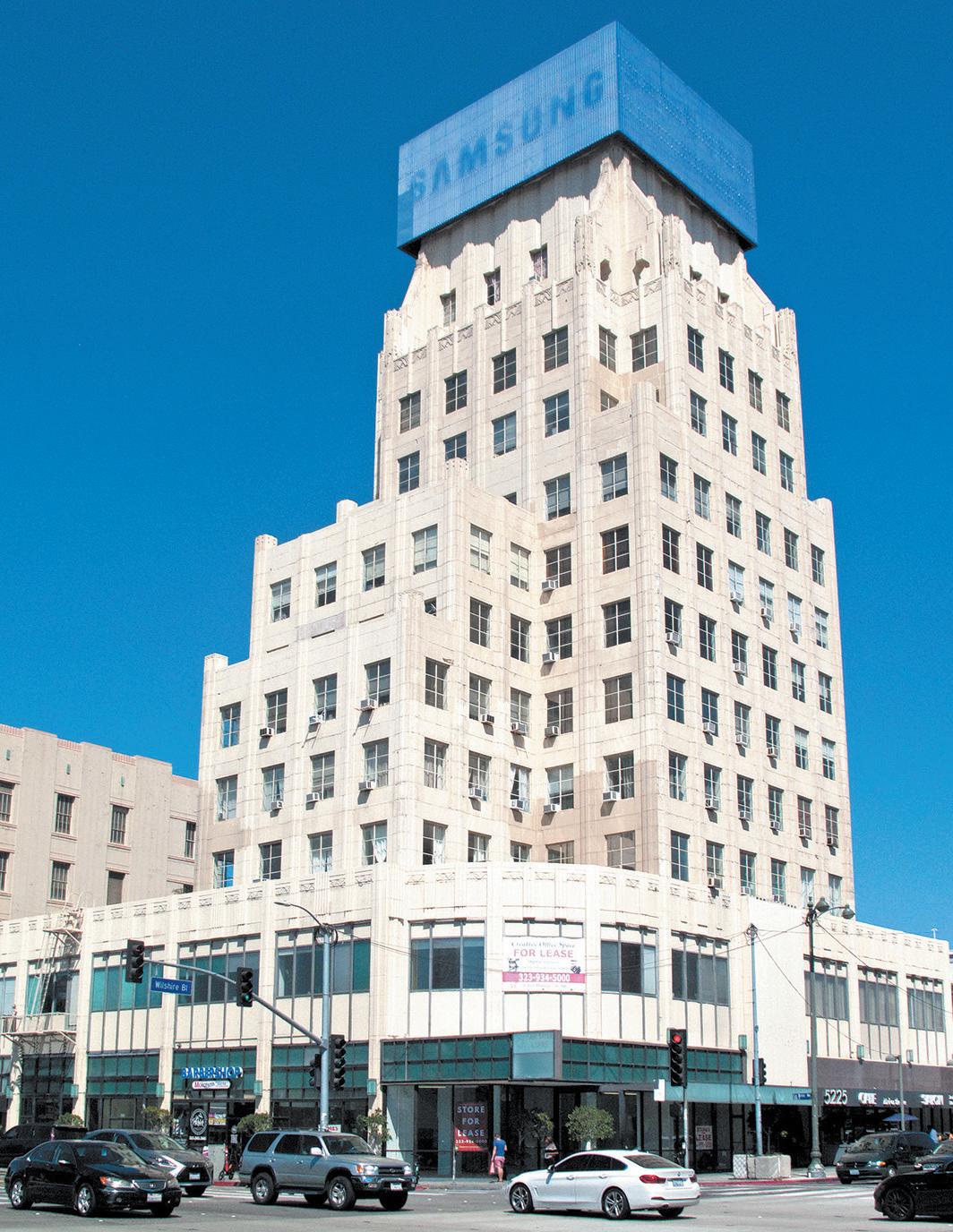
HCM, awaits a revival. Perhaps a combination of historic tax credits and new adaptive reuse and transit-oriented development incentives will encourage a restoration and redevelopment. The building “does not have the problem of other office conversions in that all the offices have windows [and terraces],” explained Luftman, who would like to see the Art Deco tower restored to its former glory and converted to apartments. “It would be a dream!”

By John Welborne
On the final Friday evening in January, approximately 300 lucky people had the opportunity to preview the 2025 Pasadena Showcase House of Design that soon will be available for public viewing for 25 days beginning on April 20. The “Empty House Party” gave the media and patron donors the opportunity to see the house prior to the remodeling getting underway.
This year’s house is an extraordinary, five-acre estate on Hillcrest Avenue in Pasadena, designed in 1928 by architect Reginald D. Johnson for Harry and Mabel Bauer. Harry J. Bauer was a successful local lawyer who in 1932 became the chief executive officer of the Southern California Edison Company (and its board chairman beginning in 1948). His wife, Mabel J. Bauer, served on the boards of the California Arboretum Foundation, the Huntington Library, Art Collections and Botanical Gardens and numerous other charitable organizations.
Arboretum fountain, pool
It was Mabel Bauer who commissioned artist Millard Sheets to design the stunning Bauer Fountain in honor of her husband, Harry, who died in 1960. The fountain, at the entrance to the Los Angeles County Arboretum and Botanic Gardens in Arcadia, was completed in 1963. Sheets also designed the Scottish Rite Cathedral, now the Marciano Art Foundation, in Windsor Square, on Wilshire Boulevard between Lucerne and Plymouth boulevards. The entry pool surrounding the Bauer Fountain is the McFie Pool, which was underwritten by pioneer Los Angeles stockbroker Lyman McFie. The family of his wife, Phila Milbank McFie, developed Country Club Park, in our part of town, and various McFie family members also lived in Hancock Park.

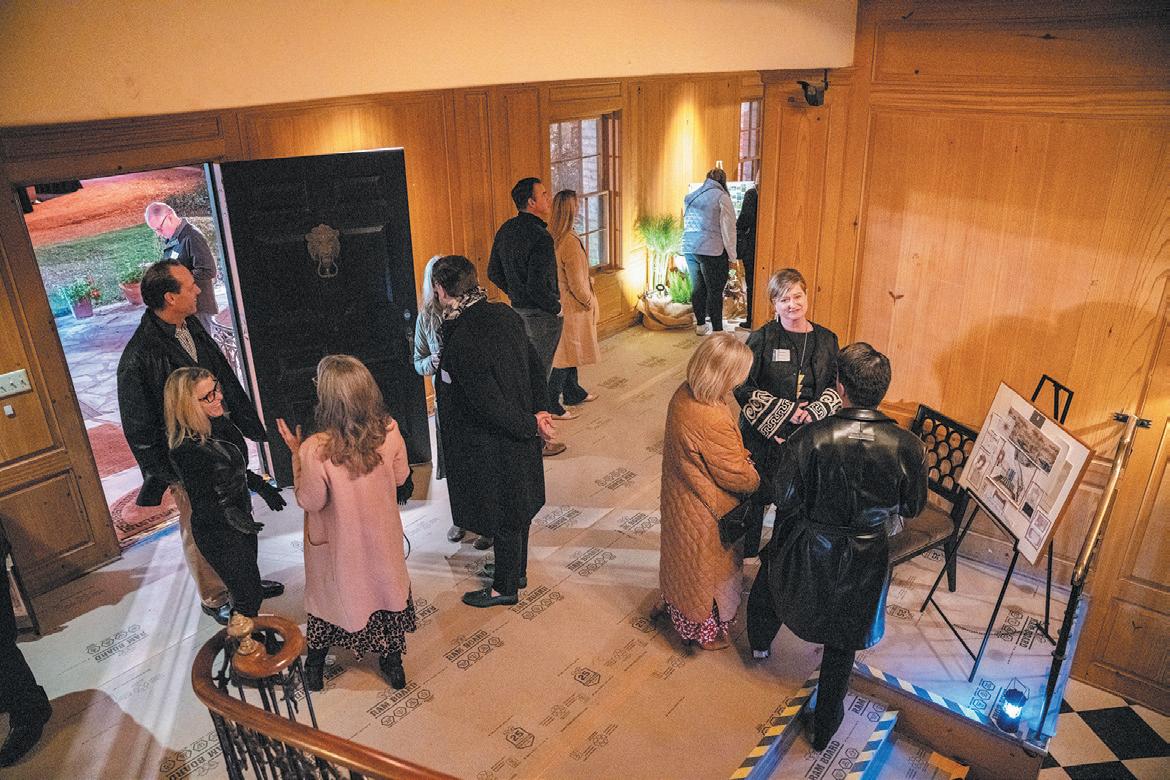
But, back to Pasadena and the Bauer House and Gardens!
Architect Johnson designed the house in the Monterey Colonial style, with prominent second-floor balconies on both the front and back sides of the house. Only two families have lived in the house, the Bauers and, later, the late filmmaker Stephen J. Cannell and his family. The building now is in the hands of approximately 30 interior and landscape designers who will update the classic rooms so more than 30,000 visitors may enjoy the estate between April 20 and May 18. On the spacious grounds during that period, there also will be shops offering a variety of boutique and craft items as well as several on-site restaurants.
The setting of the 15,000-square-foot estate is a veritable private park with broad lawns, stately oaks, tropical plantings, rose gardens and Mediterranean terraces. On one side of the house, the ground slopes down to a swimming pool and pool house with a north-south tennis court below that.
Because the fixed-up property undoubtedly will be available for sale after its Showcase period, many of the descriptions from the sponsoring nonprofit organization
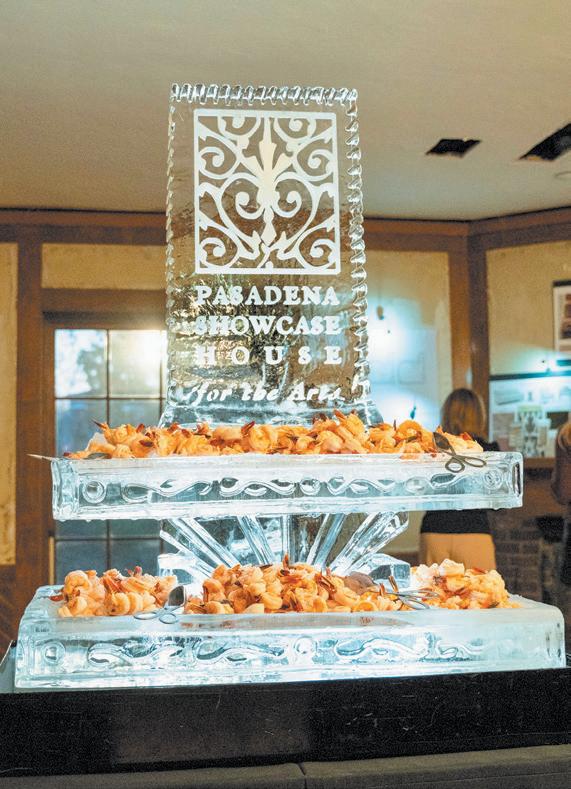
them is the very large stepdown living room, where an alcove opens to the southern terrace and the pool below. The living room and dining room, as well as the breakfast room, library and family room, all have fireplaces.” The second floor is not to be overlooked: It “accommodates four family bedrooms and baths, as well as a study and a nanny suite.”
Showcase visits
Team Curiosity, a robotics team based out of Marlborough School, designs, fabricates, builds and codes a robot.
sound like a real-estate advertisement:
“The sweeping circular drive extends southward past the home toward a concealed motor court area, where a four-car garage encompasses a guest house, workshop and gardener’s bath. In the lovely home are 18 major rooms of harmonious proportions and a purity of detail; 10 of which feature wood-burning fireplaces. Both wood and plaster moldings make their delicate statements as the flooring shines with random-width wood planks. On the main floor are the gracious reception rooms. Chief among
When the redecorating is complete and the house is available for tours, the property will be open from 9:30 a.m. to 5 p.m. (to 6 p.m. on Fridays). Timed-entry tickets are required, and shuttle buses will take visitors from free parking lots to the property. Ticket prices range from $38 to $75.
All proceeds from the tours fund charitable grants for Southern California arts and music organizations. This annual fundraising house tour originated in 1948 when the Pasadena Junior Philharmonic Committee (the sponsoring organization’s previous name) first organized the event. More than $26 million has been raised for charity through the Showcase tours since 1948. Tickets for this year’s Showcase House are now on sale. Ticket and other information is available at pasadenashowcase.org.
This 2024-25 season robot will compete this month in the FIRST Tech Challenge, a global robotics competition, against thousands of teams.
“As we gear up to compete in Regional Championships in early March, we are hoping to expand our reach even more and share our amazing work with our Los Angeles community,” a school spokesperson said.
“Additionally, we work to engage and bring robotics to our greater community, connect with STEM professionals, and collaborate with teams across the world.”
The team won the second highest judged award at the World Championships last year and are back to back Southern California champions.
This season, they’ve reached over 6,000 people through their outreach spreading the message of robotics, along with over 40,000 through our social media collaborating with those across 14 countries and 23 states.

By John Welborne
Right nearby, atop the hill in Barnsdall Park, is the world-famous Hollyhock House. Designed by architect Frank Lloyd Wright for oil heiress and theater producer
Aline Barnsdall, the residence was declared the first UNESCO World Heritage Site in Los Angeles. It is one of only three such sites in California.
Completed in 1921 and received as a gift from Barnsdall to the City of Los Angeles in 1927, the famous house and surrounding acreage are under the stewardship of the city and are operated by the Department of Cultural Affairs, while being maintained by the Department of Recreation and Parks and the Department of General Services.
Janna Ireland exhibit
If one needs an excuse to visit Hollyhock House (and one should not because it is so special), or if one is seeking a reason to make a repeat visit, a new exhibit of photographs — titled “Janna Ireland: Even by Proxy” — now hanging in the building’s art gallery is the perfect excuse.
Photographer Ireland was selected in the summer of 2024 as part of the celebration of the house’s centennial (interrupted because

of COVID-19) to photograph the interior and exterior of the building, where restoration work continues. With any historic structure by Wright, the maintenance is never-ending.
Ireland’s photo exhibit consists of 21 beautiful images that introduce new perspectives and show the quiet, subtle details of Hollyhock House. They make visible the care and the conservation that protect the site. She has said of these photographs that they are “about light and shadow, wood and concrete, and the labor involved in preserving Wright and Barnsdall’s complicated project for future generations.”
Ireland lives in Los Angeles, where she is an assistant professor in the Department of Art and Art History at Occidental College. She holds

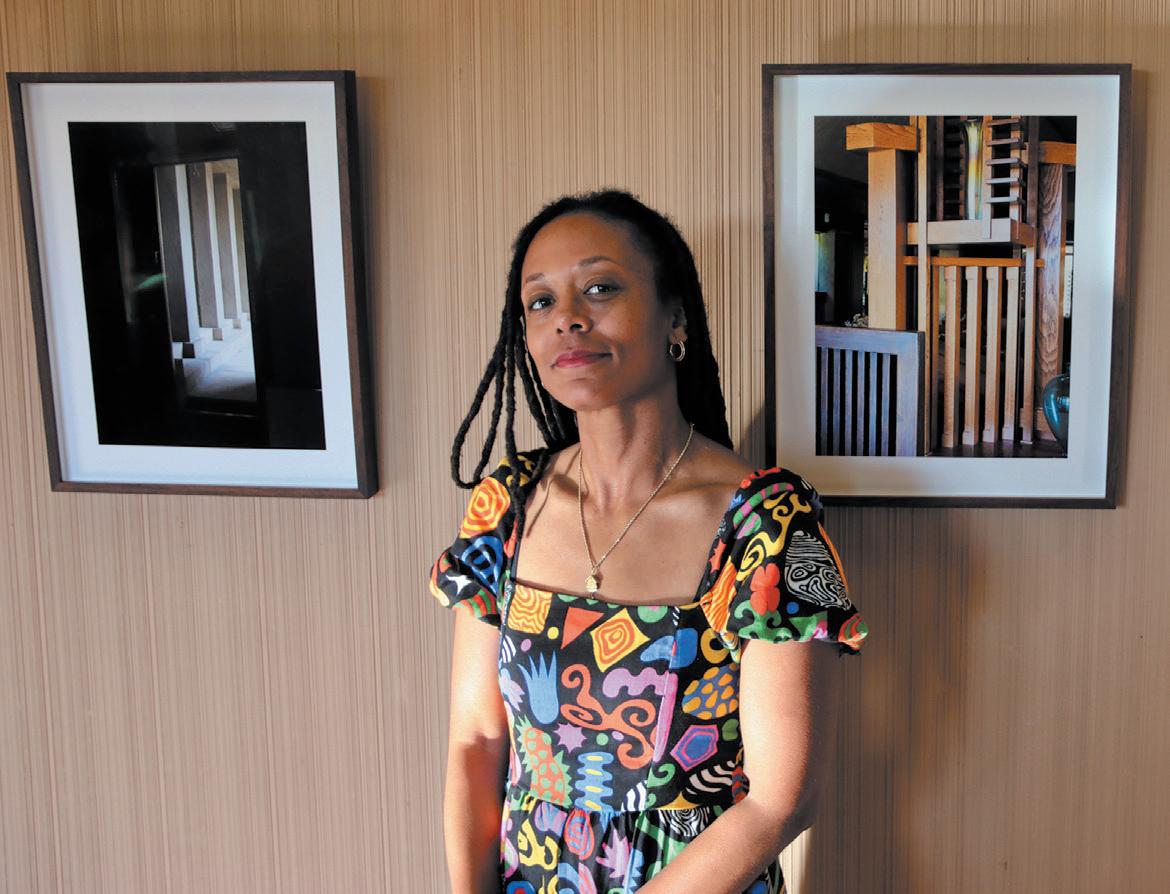
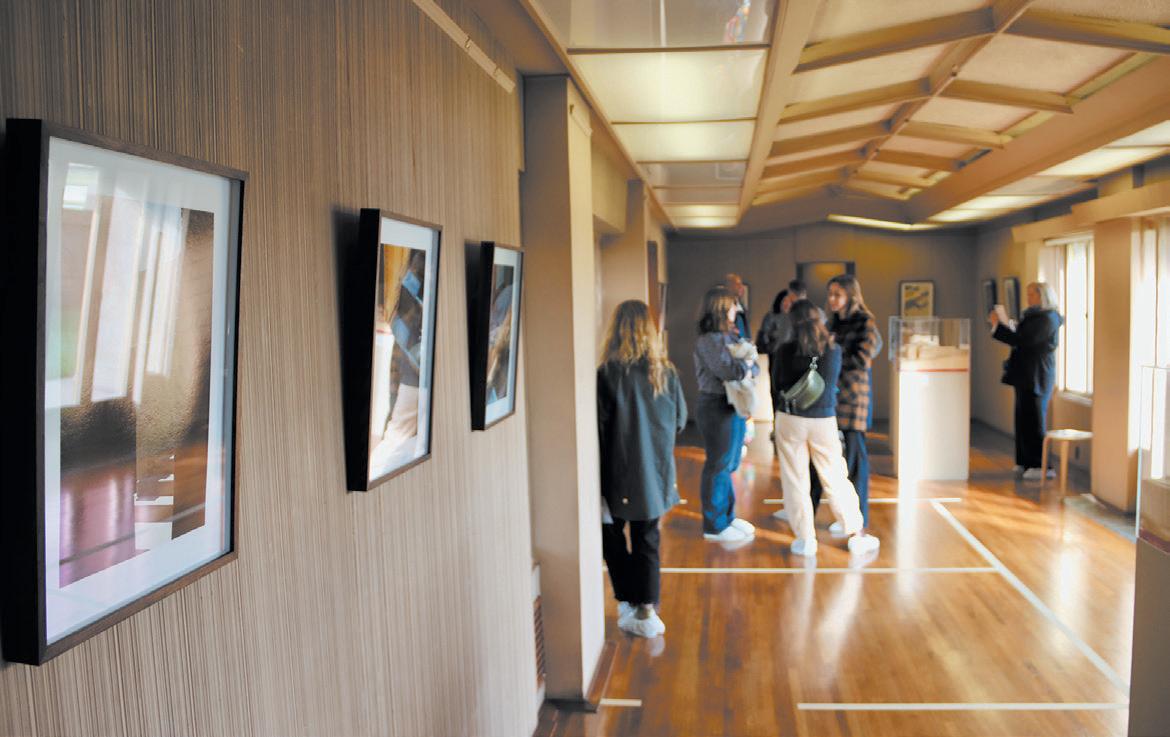
a Master of Fine Arts degree from UCLA and a Bachelor of Fine Arts from New York University.
Hollyhock House underwent an extensive restoration of the public rooms from 2012
to 2015. They are spectacular to see. Hollyhock House is the only Frank Lloyd Wright residence in Los Angeles open to
the public. Visiting hours are Thursdays to Saturdays from 11 a.m. until 4 p.m. Learn more at hollyhockhouse.org.

By Chronicle staff
Scholars have credited the Romans with the first newspaper, in 59 B.C., called the Acta Diurna or Daily Doings. Even then, the people had a yearning for the news. In 1641, English citizens turned to local papers to hear of the overthrowing of King Charles I by Oliver Cromwell. The first amendment to the U.S. Constitution, ratified in 1791, states, “Congress shall make no law respecting an establishment of religion, or prohibiting the free exercise thereof; or abridging the freedom of speech, or of the press; or the right of the people peaceable to assemble, and to petition the government for a
CAMPBELL HALL
Claire “Cal” Lesher 12th Grade
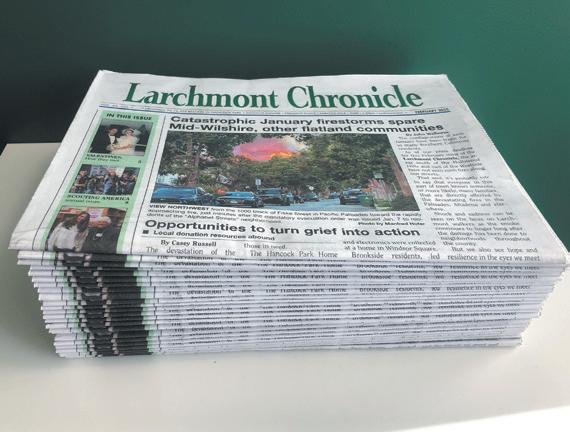
NEWSPAPERS to trust, touch and feel.
redress of grievances.” In this one sentence, U.S. law formally guaranteed freedom of the press.
There is no doubt that information and access to it is vitally important to human beings. And, with all of the news and information available at our fingertips, why would anyone need to read a
THIRD STREET
Maya Johnson 5th Grade
printed newspaper?
Trust. With decades of reputation built up and earned, readers trust printed newspapers over online news sources known for lax editorial standards and widespread misinformation. Papers have put the time and energy into maintaining high journalistic standards. Ideally, a print newspaper that provides access to online content for someone who can’t get access to the print copy provides the best of both worlds.
Touch and feel. The tactile experience of holding a paper and turning the pages provides a sensory experience that can’t be achieved while scrolling on a screen or look-
BRAWERMAN ELEMENTARY
ing at a computer. The stories are consumed with more focus and the advertisements are trusted and remembered.
Less distracting. Newspapers aren’t flashing pop-up ads and there isn’t a problem with having to pinch or squeeze or squint at a screen. As opposed to a frustrating digital experience, print newspapers can be a time of focus and solitude.
A younger audience . A study by the American Press Institute found that 74 percent of 16- to 40-year-olds get news and information at least weekly from traditional news sources, including print newspapers, for many of the reasons stated above.
the bottle, and a journalistic organization must have a digital presence in order to reach a wide range of readers. Fortunately, the pendulum has started to swing back to a time when people would read their printed newspaper with their coffee, or read their book in the park on a summer day as opposed to listening to it. In a small way these activities can make us feel more connected to our community and the stories that emanate.

The girls’ varsity basketball will compete in the first round CIFSS Division 2AA Playoffs. The boys’ varsity basketball team will compete in the first round CIFSS Division 1 playoffs. Go teams!
Our annual Hands 4 Haiti student-led benefit helped raise money for our sister school in Haiti with a variety of music performances from our students.
The high school’s Valentine Choral Concert was fantastic. The newest show in the art gallery, Pablove Shutterbugs’ “Photographic Expressions” is incredible.
Lastly, Happy Founder’s Day! Campbell Hall opened its doors 81 years ago!
Hello from Third Street School!
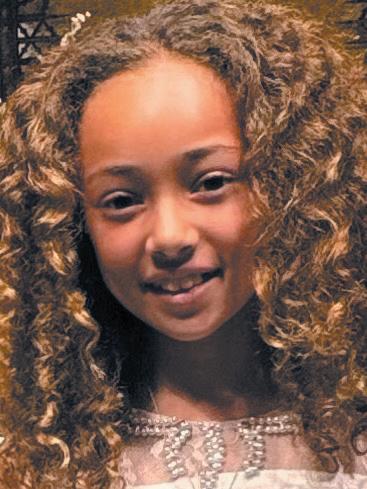
Making Caring Common is teaming up with the YMCA to help victims of the Los Angeles fires. Every class has been assigned a simple self-care item, like toothbrushes, shampoo and soap, and each student is asked to bring one to donate.
The 5th graders attended AstroCamp in the Idyllwild/Pine Cove area and had a blast! We had science lessons daily and participated in activities like zip-lining, hiking, rock climbing and stargazing.
Students have also been invited to attend “Harry Potter and the Cursed Child” at the Pantages Theater in March.

Summer Hardt and Ally Kroll 4th Grade

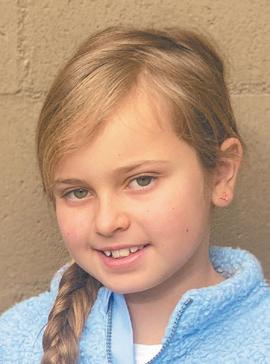
One of our favorite events is the Makers Fair! It happens every year in February. All the families in our school community come together for this special event. Each grade presents projects we’ve worked on in our specialist classes, like art, science and innovation. We also share things we’ve been working on in our homerooms.
In addition to all the amazing projects, there are delicious desserts. You can even make things yourself, like pita bread, pins and more!
During the Makers Fair, a slideshow of pictures from the year plays, showing all the great memories we’ve made. It’s so much fun!
FAIRFAX
161 S. Gardner St. 323-936-6191
JOHN C. FREMONT 6121 Melrose Ave. 323-962-3521 (temporarily closed)
MEMORIAL
4625 W. Olympic Blvd. 323-938-2732
WILSHIRE
149 N. St. Andrews Pl. 323-957-4550
HOURS
Mon. and Wed., 10 a.m. to 8 p.m.; Tues. and Thurs. noon to 8 p.m.; Fri. and Sat., 9:30 a.m. to 5:30 p.m. Libraries will be closed Mon., March 31 for César Chávez Day.
Archives. Reading an archival newspaper is like opening a time capsule. The stories and ads in those pages just feel different. They transport one back to another time and place in a way that can’t be done digitally.
Accessible. Printed newspapers can reach a demographic that might not be technically proficient, that might not have the resources to view stories in a digital format or, simply, that have not grown up with phones in their hands and their heads down.
Ultimately, print and digital can and do coexist. The genie of technology is out of
Cell phones, smartwatches and earbuds have been banned from use for students during the day at all Los Angeles Unified School District (LAUSD) schools. The LAUSD Board passed the ban in June 2024. The deadline to comply was Feb. 11. Some schools implemented the ban prior to this date.
How the school enforces the restriction is up to the school. Some purchased magnetic pouches for each student (which limit cellphone access), others have lockers and many are using the honor system where students keep their devices in their backpack throughout the day, including lunch.

By Nona Sue Friedman
Three high school juniors from the Larchmont Village area turned their passion for rock climbing into helping other kids learn how to climb. Last year, Henry Miller, Grayson Green and Matias Ziperovich created Boulder Buddies.
Boulder Buddies meets the third Friday of each month during the school year. The
Xavier Mason and Emory Kirkwood 3rd Grade

We have a jog-a-thon coming up called Larch Radness taking place Sat., March 1. Larch Radness is a fundraiser on the Selma campus where kids run for dollars. We also have an upcoming art show. For it, our grade will make Monet inspired paintings to put on display. Calling all bookworms! March is national reading month, and Larchmont has a tradition called, “Drop Everything and Read.”
founding trio, along with other climber volunteers, teach disadvantaged kids ages 5 to 13 the basics of climbing. Buddies teamed up with the Sheriff’s Youth Foundation to help the communities surrounding their Downtown gym.
It’s a donation-based organization. If you are interested in helping them reach more underprivileged kids, check out boulderbuddies.org.
Nina Norwood 11th Grade
Right:
PASSIONATE ABOUT rock climbing are, from left, Henry Miller, Matias Ziperovich, Jamielyn Flores of the Sheriff’s Youth Foundation, Sgt. Juan Martinez from the County of Los Angeles Sheriff’s Dept., and Grayson Green.

Rosie Lay 11th Grade
Ella Wolovitch 9th Grade

We hosted our annual Multi-Cultural fair to show love and appreciation to our diverse student population. Ballet Folklórico performed Mexican folk dance, Filipino dancers gave a show and Korean food was served along with various other cuisines from around the globe.
Our Junior High Decathlon team placed 4th overall at the Quizbowl and won several individual medals. A big thank you to everyone who participated in our coat drive for a women’s domestic violence shelter. CCS is praying for those affected by the fires.
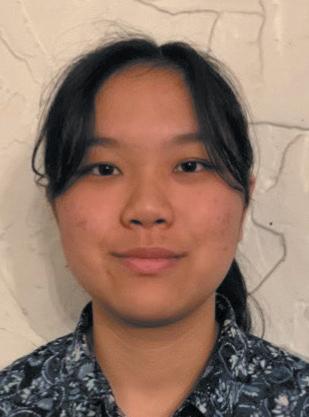
The Academic Decathlon team competed in the LAUSD regional competitions, while the robotics teams competed in the Interleague Tournament at Monrovia High School. The Computer Science Honor Society hosted the last round of the VEX IQ Robotics Competition, ending with an award ceremony to recognize the teams advancing to state championships.
Black history month was celebrated with events such as the Black College Expo and the Black Excellence Showcase.
To support families impacted by the fires, we contributed to a food drive.

February was eventful as students honored Black History Month, staged our annual talent show and participated in the Close Up program in Washington, D.C.
For this year’s Close Up trip, 24 juniors and their faculty chaperones spent one week touring the nation’s capital. Students got a unique opportunity to see how government works “up close.”
Another highlight was when the program brought our students together with peers from around the country to discuss current events and debate the most pressing issues facing the nation.

There’s been a lot of holi day spirit! For Lunar New Year, we had an engaging assembly filled with a ramen noodle eating competition, trivia game, a performance from our own VIVID dance team and a traditional dance performance.
With love in the air, students bought Valentine’s Day grams, which are gifts you buy for your friends.
We’ve had a plethora of extra days off due to President’s Day, Martin Luther King Jr. Day, and Lunar New Year. These holidays gave us the opportunity to enjoy the cultural and historical significance behind these special days.



By Robyn Randolph
Instead of red wine or a dehydrating, liver-taxing



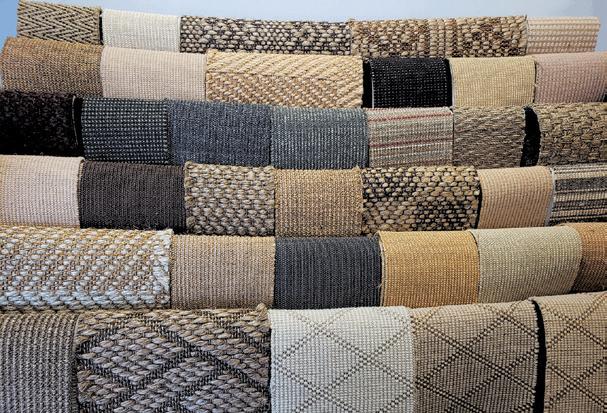

juice. Chill some glasses in the freezer, turn them upside down and dip the rims in some Trader Joe’s Chili Lime spice (or Tajin), like you would if you were making margaritas. Mocktails are fun to serve as an alternative to cocktails, so you can stay true to you and your goals while inspiring company.
Each of the four ingredients lower inflamation by supporting liver health. Make food your medicine! The contrasting flavors form a delicious drink.
Ingredients: 1 lime, the whole shebang (skin and all)
1 large knob ginger thumb size
1 beet
3 apples
Chili lime spice (optional)
Blend in your juicer. Serve in a glass dipped in chili lime spice.
Do you have a seasonal recipe for the Chronicle? Write to circulation@larchmontchronicle.com with “Recipe” in the subject line.

By Chronicle staff
Enjoy Japanese immigrant Francis Miyosaku Uyematsu’s camellia blooms at the Descanso Gardens and learn about the history he and his plants endured during the Japanese Garden History talk and tour Sat., March 8, from 3 to 5 p.m.
Other blooms include daffodils, tulips, peach blossoms and magnolias. The magnolia trees, a frequent sight we see in and around our neighborhood as well, are, according to the Descanso website, … “one of the earliest flowering plants on Earth… Their fossils date back over 100 mil-
lion years.” Magnolia trees rely on beetles for pollination, as they formed before the existence of bees.
Visitors can also stroll through the California coast live oak grove and learn about the Tongva people and their relation to this native species and its gift of acorns. Maybe your neighborhood could welcome a magnificent Quercus agrifolia for the next 200 years.
“Daphne‘s Wardrobe Metamorphosis into Nature,” a study in interdisciplinary artworks by women combining plants and the human form, is on view from Sat., March 1, through Sun., June 1.


By Adam G. Schiller
Growing up on McCadden
Place launched my fascination with our native tree, Platanus racemosa, often called the California sycamore. Though not colorful, the gnarled trunks, white bark and soft leaves of these trees tower over sidewalks of our streets here in the neigborhood with gentle grandeur.
But the California sycamore is increasingly in danger of widespread death due to disease and the genetic hybridization with trees foreign to the region.
Several illnesses pose serious threats. The most pervasive is a fungus caused by an invasive beetle species that harmed a California sycamore in front of my home years ago. Since appearing in the U.S. in the 2010s, the insect has increasingly threatened native sycamores, and therefore the many species that rely on them as well. We treated that fungus, and the tree survived.
The California sycamore is more than a majestic tree. It
is a foundational component of the ecosystem that continues to coexist with us after more than a century of development in the Mid-Wilshire area. If we allow it to disappear, so will the creatures that rely on this species and enrich our neighborhoods. In order to preserve this ecosystem, we need to protect the California sycamore. The process starts on our sidewalks.
Genetic issue
Another issue is genetic, as I learned from my mother, a molecular biologist of plants. The dominant genes of other sycamore varieties, such as the London plane, can spread to nearby local trees through airborne pollination to produce variants that lack the critical California sycamore properties local species depend on for survival.
Genetic hybridization becomes relevant locally when considering how sycamores in Mid-Wilshire are replaced. The Hancock Park Home Owners Association is offering to replace sick or dead native syc-
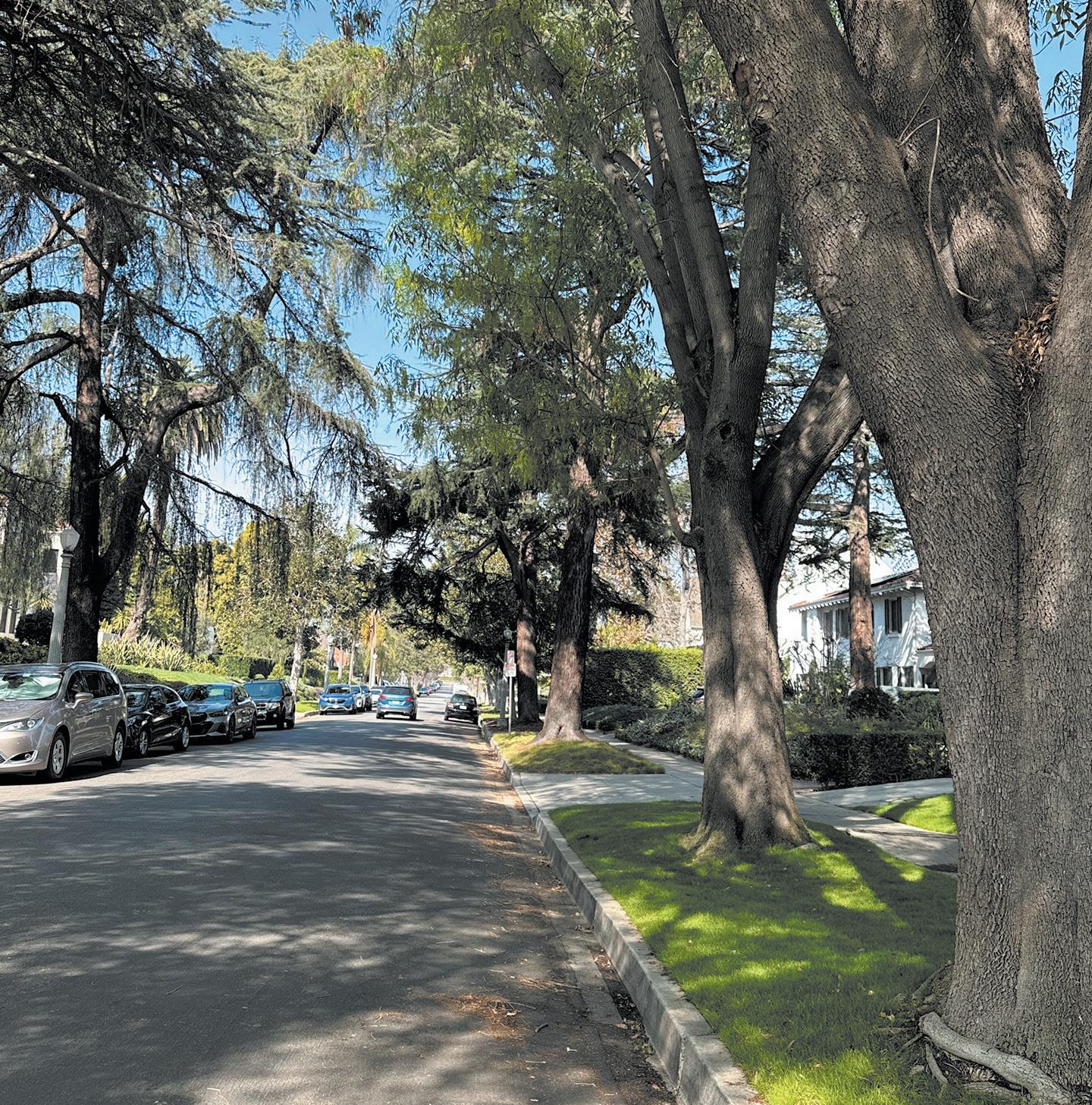
amores with non-native trees such as jacarandas and elms. This has been encouraged by claims that the California sycamore has high water needs, though its demands are equal to each of these options in the local climate conditions of Los Angeles. If one were to receive approval to plant a California sycamore, the tree that a homeowner might receive could be hybridized such that it would not support the local ecosystem. Admittedly, there is little res-
idents can do to directly stop the hybridization of the California sycamore beyond raising awareness. This challenge to its survival may be addressed through greater care on the part of the wildlife restoration groups and local government organizations that impact breeding of the species.
But protecting the California sycamores that tower over our streets is an effort that anyone can pursue. Checking for disease symptoms and beetle infestation is the first step. Residents may then enlist treatment for those on parkways adjacent to their properties. Though not inexpensive, it is a worthy investment, in that mature trees contribute to increasing property values; reduce energy costs; and require less water than saplings. The lifespan of California sycamores, upwards of 400 years, provides benefits far into the future. Additionally, saving existing trees avoids the need to plant non-native trees or hybridized sycamores.
By Chronicle staff
Chris Shogren, an environmental horticulture advisor for UC Cooperative Extension, told us the Sycamore is still recovering from the beetle that came about 10 years ago.
“They are looking better, but last year a resurgence of the beetle population occurred. Many of the sycamores are just aging out as they’ve been in the landscape for 60 years or so.”
When asked about what trees he thought would be good for our sidewalk areas, he said it’s a difficult choice because people like big trees with large canopies, but they demand a larger space around them.
“Crape Myrtle, the most common planted tree in parkways right now, is hardy, and has fewer root issues than sycamores.”
It’s also smaller, with colorful
and long-lasting flowers in summer. Shogren explained, “The coast live oak, a Los Angeles native, needs a big, wide area and doesn’t like to be watered much in the summer (when Angelenos water most).”
Being a native, it follows our normal weather system where it receives most of its water in winter. Casual summer watering nearby for other landscape is not healthy.
Another interesting point Shogren shared: “There is another tree — the native island oak, which comes from the islands off Southern and Baja California” — which Shogren suggested to the city of Santa Monica “to try because it’s a little bit smaller than an oak, and being in a city near the coast with similar moisture, it might fare well.”
In our area, with less

moisture, he spoke of the southwest oak; “It’s smaller and has a much less invasive root system. It is commonly seen in Arizona, which does get some summer rain, so it works with the way we tend to water in our landscapes here in Southern California.”
For recommendations in choosing trees and what sort of space they ought to be in, visit Selectree.calpoly.edu.

By Helene Seifer
On Jan. 22 I climbed into a tricked-out truck stuffed with potatoes, squirt bottles of chimichurri and horseradish sauce, butternut squash salad, giant chocolate chip cookies, a traveling sous vide stuffed with rib eye and porterhouse steaks, two electric barbecues and The Grill Dads, Ryan Fey and Mark Anderson, Food Network personalities and regulars on the “Today” show.
We headed to South Central L.A., to Fire Station 33, the busiest fire station in Los Angeles, to thank the firefighters stationed there with food.
And thus began my adventure giving back to firefighters, who give so much to us every day, but never more
LE LYCEE FRANCAIS DE
LOS ANGELES
Aydin Hammoudeh 8th Grade

so than during the horrific January fires.
Brookside resident Julie Stromberg has been posting
to the coaches and players. Go lions!

on social media about her effort to bring meals to firefighters, and that’s why I got involved. When both the Pal-
isades and Eaton fires broke out Jan. 7, 2025, unleashing their fury and ravaging the neighborhoods, Stromberg
wanted to do something to help, so she called a young firefighter she knew to ask what would be appreciated. He said they needed good meals. She thought, “That’s simple. Anyone can do that.” On Feb. 9, the first fire station dinner was delivered. Meals come from many sources. “I got connected to the Independent Hospitality Coalition LA [an organization of Los Angeles hospitality operators, advocates and workers]. A friend owns Ronan [a pizzeria on Melrose].” Stromberg notes that both Ronan and Tsuri (sushi bar on Melrose) got donations from clientele and community members to subsidize
(Please turn to Page 11)

The middle school girls volleyball team won the FIYA division 1A championship. The boys varsity soccer team is Independence League Champions and has entered the divisional playoffs. Bravo
Chinese is one of the seven languages you can learn at our school. An important tradition is celebrating the Lunar New Year with a dragon dance, games, traditional food, fieldtrips in Chinatown and fun activities led by students.
Additionally, our school celebrated Black history month with a “Stepping” demonstration from Alpha Phi Alpha for elementary students and various art

contests. The high school held a fantastic winter formal, transforming the gym into Casino Royale, while our middle school delved into reading and author visits for the annual Read-AThon.
Valentina Aquino 10th Grade
and could learn more about other cultures and identities.
Amanda Argiropoulos 8th Grade
Hello Larchmont friends!
100-year olds and wore things with 100 items.
Valentine’s Day was a sea of pink, red and white with treats passed around to our friends.
YULA HIGH SCHOOL

February was a festive month here at Marymount! As part of our Conservatory Arts Program, student performers took the stage at Cabaret Night, dazzling the audience with their incredible singing and dancing. It was a night filled with energy, creativity, and talent!
The next evening, students dressed up for the highly anticipated Father-Daughter Dinner Dance. This annual event is always a special time for students to bond with their dads while competing in the lively dance contest. Each year, a new father-daughter duo steals the spotlight on the dance floor! February truly showcased the heart and spirit of Marymount!
OAKWOOD SCHOOL
Charlotte Zabel 12th Grade

Valentine’s Day began with sweet start at our annual pancake breakfast with our students decked out in red, pink and purple.
Although February is known for splurging on sweets, it’s also Dental Health Month. We held a special dental health presentation for our preschoolers and first graders.
In March, we will celebrate Read Across America Day with a day spent in our cozy pajamas reading some of our favorite books.
Our students will also be working on their Science Fair projects – what thought provoking experiments will win this years’ coveted prizes?
I leave you with this thought“Remember that sometimes not getting what you want is a wonderful stroke of luck.”
— The Dalai Lama
Eitan Gershov 11th Grade
On the last day of the first semester at YULA, we have a special tradition: Impact Day. On this day, the whole school heads out to perform acts of kindness. Seniors go to soup kitchens, juniors visit old age homes, sophomores spend time with individuals with special needs and freshmen visit hospitals. Impact Day is important because it reminds us that, kindness and good values always come first. Having participated in three Impact Days myself and speaking with many peers, I believe that we, the students, gain just as much from this day as those we are helping. It’s a meaningful way to give back and grow at the same time.

The school musical, “Mean Girls,” is finishing its run on March 1. It’s going fabulously! The songs are difficult to sing and the logistics of the show are equally challenging, but we are making it happen!
BRENDAN Alyssa Lee 8th Grade

The IDEAS Summit took place in the middle of February. This is a week of dialogue and discussion about different world events, issues and subjects of debate. This year we took a new approach and limited the speakers to being inside the Oakwood community rather than bringing people in. During the IDEAS Summit, we had affinity group meetings


Fun is in the air at St. Brendan! The last week of January we celebrated all of the wonderful people in our community during Catholic Schools week. The theme each day was appreciation. The week culminated with an exciting win by our teachers in the faculty verse eighth grade annual volleyball game.
We had our first Lunar New Year party. The memorable evening included delicious food, dancing and Korean performances. On February 12th, we celebrated our 100th day of school. Students dressed up as

While sorting through some change in my wallet, I noticed that one coin stood out among the rest. Smaller and lighter than any of my U.S. currency and notably gold in color, the coin bore on one side the number 5 encircled by a wreath of grapes illustrated in minute detail. The reverse side showed the profile of a stately woman, her hair tied with a ribbon and crowned with a diadem. The words “Confœderatio Helvetica” appeared in an arc surrounding her. “Helvetica...” I wondered to myself. “Like the font?”
The font known as Helvetica — long prized for its neutrality and clarity — is near ubiquitous. It graces the logos of Verizon and Target, the signage of the New York
(Continued from Page 10) or outright pay for meals. Friends of friends got involved and that’s how Marino Restaurant on Melrose provided two meals. Rocco’s Pizza on Wilshire also joined the effort. Friends of Wilshire Park Neighborhood Association got their whole community involved, with some delivering home-cooked meals to their local Station 29 (Hancock Park). Daphne Brogdon, the late chef Mark Peel’s exwife and a blogger and food personality in her own right, cooked a feast for the cause. United Neighbors worked on funding and delivering meals. Miracle Mile Residential Association adopted Mid-City Station 68. A student at Immaculate Heart adopted Station 82 for a week. Other restaurants contributed, such as Larchmont’s Great White, Genghis Cohen (Fairfax), Kismet (Los Feliz) and Jaragua (Salvadoran restaurant on Beverly Boulevard at Western Avenue) and La Brea Avenue’s Met Him At a Bar. The number of firefighters varies from station to station. On average there are 10-20 firefighters on duty at a time, but Station 108 (Franklin Canyon) has four
City Subway and, of course, the headlines of this paper. It’s so simple and unassuming it often goes undetected. It’s simply “in the water;” something we always see but rarely perceive.
The typeface was first introduced in 1957 by designers Max Miedinger and Eduard Hoffmann of Switzerland, which, I learned, was also the country of origin of my small gold-colored coin, undoubtedly a stowaway from my trip there a couple years prior.
Originally called “Neue Haas Grotesk” — more on that later — the family of letters was renamed “Helvetica,” after the Latin phrase for Switzerland, “Confœderatio Helvetica” (literally “Swiss Confederation”). The Latin term originated
and Station 90 (near Van Nuys airport) has 50.
Station 33, where I went with the Grill Dads, had 15 firefighters the night we went. While the steaks were grilling, their ambulance went out on a medical emergency and their two remaining fire trucks were called out for structure fires (their third truck was at the Palisades Fire). Shortly after the food was ready and set out, though, Capt. Raul Cabrera and the crew returned and were very appreciative of a delicious hot meal that they didn’t have to cook themselves for a change.
The Grill Dads are no strangers to cooking for first responders, having teamed with Food Network star Guy Fieri to cook during the devastating 2018 fire in Paradise, California. They also grilled in South Carolina during the double whammy of last year’s hurricanes Helene and Milton. Food people care, we have seen over and over.
The fires might be out, but showing support for our first responders is still needed. The other week, after all the fires were extinguished, I walked to Melrose Hill Station 52 with Andrew Lawson, the owner of Café Telegrama (on Western), with lunch for Captain Rorden and his crew. It’s a small station — only five firefighters were there — but

from “Helvetii,” the Gaulish tribe that, before the Roman era, occupied what is now the northern part of Switzerland.
The typeface’s original name, Neue Haas Grotesk, stood to be questioned. How could anyone describe the graceful, well-proportioned letterforms of Helvetica as “grotesque?” I descended further into the coin-incited rabbit hole.
The word “grotesque” has shape-shifted in meaning, branching into various inflections — from neutral to pejorative and noun to adjective — before landing in they were one of the primary stations sent to the Sunset Fire along Runyon Canyon, the fire that could have threatened the Larchmont area had the winds risen to the force seen in the Palisades and Eaton fires.
Lawson and his partners in Café Telegrama and the attached Italian restaurant Ètra, had already served over 100 free meals to first responders and those displaced by the fires and they continue to do so, as many other eating establishments are doing. They also held a fundraiser with La Morra Pizzeria that raised $4,000 for GoFundMe’s Wildfire Relief Fund.
But it’s especially poignant to walk into a station with a meal and meet the firefighters who did — and do — so much.
the present day as a word used to describe that which is “absurdly incongruous,” according to Merriam-Webster. What was “incongruous” to 19th- and early-20th-century design critics about the newly developed grouping of typefaces that came to be known as “grotesque” was their lack of serifs, the short strokes that cap the ends of the lines that made up letters in most fonts up until that point (including Clearface, the circa 1907 one you’re reading now). These early “sans-serif” designs were deemed crude when compared to their more ornate predecessors.
“Grotesque,” from the Italian “grottesca,” meaning “of a cave,” was first assigned to paintings found on the walls of excavated Roman chambers discovered during the Renaissance. It later evolved into the name of a genre of art populated with fantastical human and animal figures,
typically arranged in an intricate and decorative manner. Mythical creatures carved from stone and affixed to Gothic cathedrals also came to be called “grotesques,” a renaming from the Middle Age term “babewyns,” from the Italian “babunio,” meaning “baboon.” If the stone grotesque was designed to divert water away from a building, it was called a “gargoyle,” from the Old French “gargoule” (meaning “throat”), a word that also begets the English word “gargle.”
My questions now answered, I walked over to my “everything” drawer, where paper clips, rubber bands and matchbooks go to lie in wait. Filing my 5 centimes Swiss coin away, I wondered when I might need it again in the future — for a trip back to its place of origin, or perhaps simply another journey through the annals of design history.
Harriet, a tortoise, was born around 1830 in the Galapagos Islands, where she met British naturalist Charles Darwin. He took her to England when she was merely 5 years old and the size of a dinner plate.
Several years later, she was taken to Australia and named Harry by the Brisbane Botanical Gardens, who believed she was a he.
Eventually, her keeper found she was a female and
changed her name. She continued her somewhat celebrity life until 2006, when she died at 175 years old. She was one of the oldest living creatures in the world. Her favorite treat was red hibiscus flowers.


